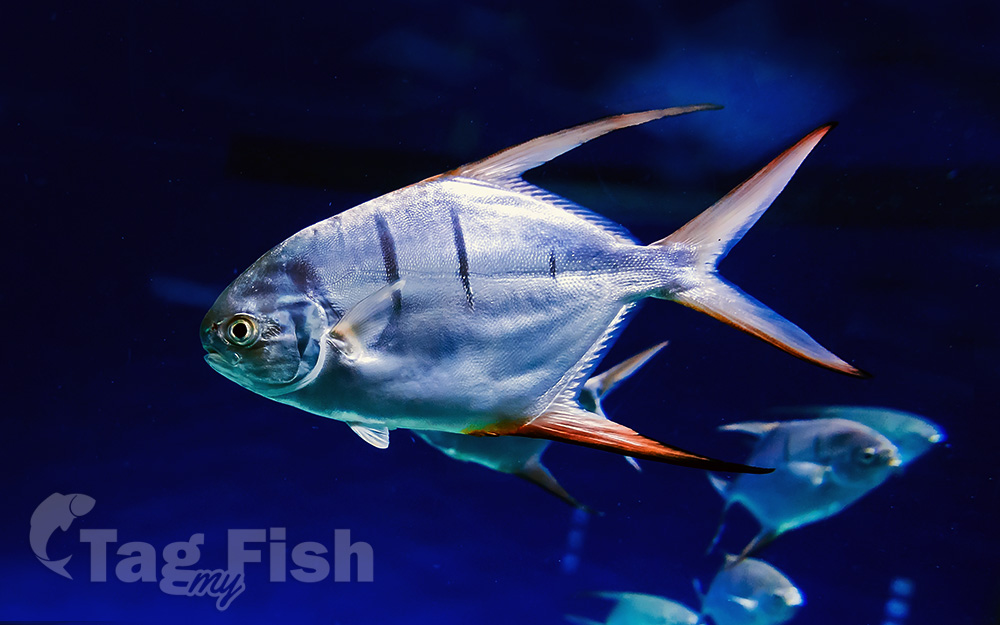Palometa
(Trachinotus goodei)

Classification
General data
Trachinotus goodei, the palometa, is an ocean-going game fish of the family Carangidae. Other common names include banner pompano, camade fish, cobbler, gafftopsail, great pompano, joefish, longfin pompano, old wife, sand mackerel, streamers jack, wireback. This fish is native to the western Atlantic Ocean from Massachusetts to Bermuda to Argentina. It can be found in the Gulf of Mexico and the Caribbean Sea.
The palometa is best recognized by its elongated dorsal and anal fins with dark anterior lobes. The dorsal fin usually has seven or eight spines and 19-20 soft rays, while the anal fin has two or three spines and 16-18 soft rays.
Its coloration varies from gray to blue-green on the top of its head, and the sides are silver with four narrow, vertical bars. A faint fifth bar shows near the base of the tail. The breast usually has an orange tinge. The tail has no scutes, unlike many members of its family.
The largest known palometa was 50 cm (1 ft 8 in) long. The heaviest was 560 g (1 lb 4 oz).
The palometa prefers clear, tropical water in sandy shores and bays. It may school above coral reefs.











